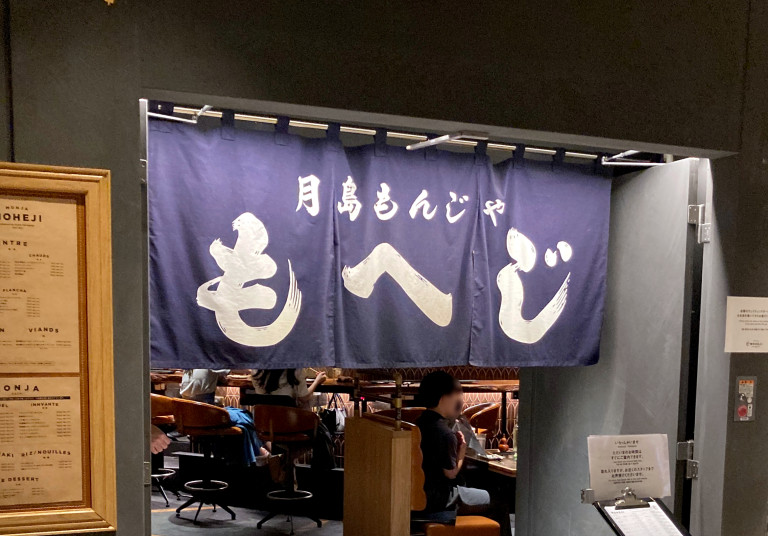
How do European flavors combine with a traditional Japanese dish?
Are you a monjayaki fan? Monjayaki is a type, most commonly eaten in Tokyo, made with cabbage, dashi (bonito stock), flour, and whatever toppings you want, chopped up and cooked on a griddle. It’s a great food to eat as a group, and though it’s been very popular among Tokyoites for a long time, it’s seeing an extra surge in popularity these days.
However, our Japanese-language reporter and foodie Mr. Sato, who hails from Shimane Prefecture, had actually never eaten monjayaki, since Shimane doesn’t have a culture of eating it. Lately, he’s seen a lot of monjayaki restaurants opening up throughout Tokyo, so he decided to stop by the Shibuya Scramble Square branch of Moheji, a monjayaki restaurant based out of Tokyo’s Tsukishima neighborhood, to try it out for the first time.
Moheji is actually unique among monjayaki restaurants in that it incorporates French ingredients into its recipes. In fact, the Shibuya Scramble Square branch operates under the theme of “Monja Innovation”, so the menu is entirely original. It’s so popular that there’s usually a line of customers waiting to get in, but Mr. Sato arrived ahead of the opening time and was lucky to get seated quickly.
He was excited to try an amalgamation of French and Japanese food. Surprisingly, the menu also has non-monja European dishes, including seasonal fare like ajillo and carpaccio, neither of which are French. They also serve okonomiyaki and yakisoba, including a limited-time-only oyster okonomiyaki.
The monjayaki menu has two sections, titled “Traditionnel” and “Innovante” (mistyped as “Innvante”). “Traditionnel” includes popular favorites like spicy cod roe and mochi as well as “Fukagawa style,” which includes clams and vegetables. You can also order “Plain Monja” and add whatever toppings you desire.
The “Innvante” Monjayaki has interesting options from many different countries, including clam chowder, hot and sour soup, risotto, Genovese, and Pescatore. Clearly, inspiration was taken from not just France but other European countries but even North America and China. Mr. Sato was intensely curious about how such very different dishes would mesh with Japanese cooking. After some deliberation, he decided to throw caution to the wind and ordered the most expensive item on the menu, the Lobster Bisque Monja (4,400 yen [US$31]).
Each table at the restaurant has its own hot griddle, which is where the monja is cooked. The one at Mr. Sato’s table was already hot when he sat down, which meant he’d be able to start cooking immediately. That was good because the Lobster Bisque Monja arrived in moments. It looked like a lot of food, so Mr. Sato wondered if it was actually meant to be shared.
The lobster looked so delicious that he was tempted to pluck it out, grill it up, and eat it all by itself, but he was here to eat monja, so that’s what he was gonna do.
The only problem was that he didn’t really know how to cook monja. What he did know, which he’d learned from a TV show, is that you have to make a little valley on the griddle with the ingredients, then pour the batter in the middle. After that, he had no idea what to do.
Luckily, the staff at this restaurant cook the monja for you. Monja is a little complicated to cook when you’re a first-timer, so having someone with a skilled hand do it for you is a definite bonus. In no time, it was ready to eat!
Mr. Sato was grateful that they did it for him, but…what happened to the lobster?! It disappeared somewhere in the Sea of Monja. Well, it had to be in there somewhere. “Don’t worry, lobster! I’m coming to save you with my tiny spatula!”
Speaking of the spatula, as Mr. Sato’s eyes were drawn to the glint on the minuscule utensil, he felt a little strange using such an itty-bitty device to eat such an expansive dish. This is, though, the traditional utensil used for eating monjayaki. It seemed awfully inefficient, though. Won’t the food burn while it’s waiting to be eaten on the hotplate? And since they’re made of metal, don’t the spatulas get hot?
But after a moment of hesitation, Mr. Sato said, “Whatever! When in Rome!” and dove in with his tiny spatula, scraping up morsels of delicious food bit by bit.
It was really good! Even though it’s a similar flour-based dish to okonomiyaki, it was entirely different. Just changing the ratio of liquid to flour altered the texture completely.
Oddly, it was a bit like eating hot cream. Since the base of this particular monjayaki was made with bisque soup, it had a very strong aroma of lobster, which also meant the experience was like eating hot cream with a hint of shellfish flavors. And don’t worry! Mr. Sato did find the lobster, which he rescued straight into his mouth and then learned was absolutely delicious.
Mr. Sato had thought it would be too much food for one person, but he ate it all before he even realized it. In fact, he felt sad that it was already gone, and was already thinking about what he’d order next time. In other words, he’d completely fallen into the monja trap.
He had to admit that the experience of eating monjayaki is pretty entertaining in itself, and he could see the appeal of a fresh, unique experience for tourists from other parts of Japan as well as other countries. Plus, it seemed like it would be a lot of fun to come with family or friends, order a few different flavors, and share them.
Moheji’s innovative flavors added an even more interesting flair since monjayaki is a food with a long history in Tokyo. Mr. Sato thought the restaurant’s original menu was amazing, and could understand why they would often have lines out the door.
Whether you’re already a monjayaki fan or haven’t yet had a chance to try it, Mr. Sato highly recommends Moheji’s all-new monja flavors. And if you are a monjayaki fan, did you know you can eat it at home after getting it from a frozen monjayaki vending machine? Better stock up so you’ll always have it when you want it!
Restaurant information
Moheji Shibuya Scramble Square / もへじ 渋谷スクランブルスクエア
Tokyo-to, Shibuya-ku, Shibuya 2-24-12 12th floor
東京都渋谷区渋谷2丁目24-12 12階
Open 11 a.m.-11 p.m. (last order 10 p.m.)
Website
Photos © SoraNews24
● Want to hear about SoraNews24’s latest articles as soon as they’re published? Follow us on Facebook and Twitter!
[ Read in Japanese ]

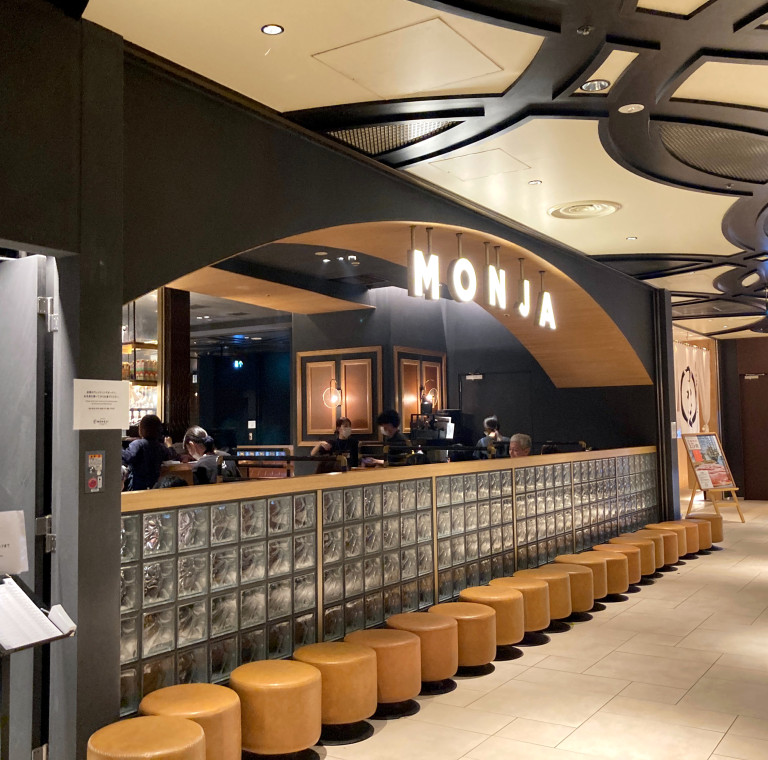
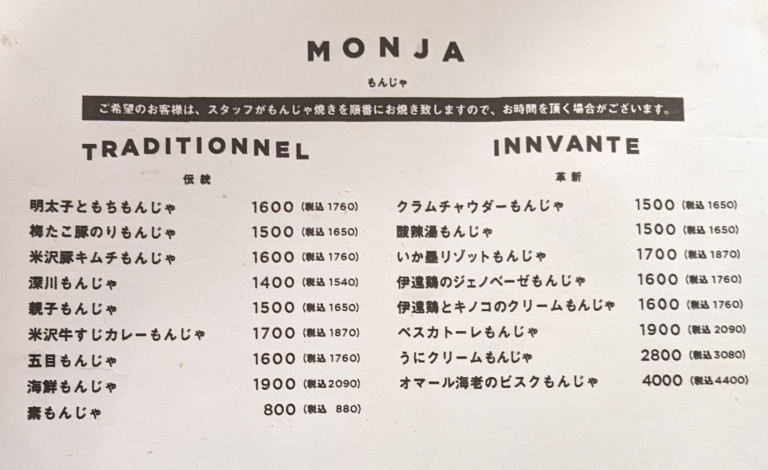
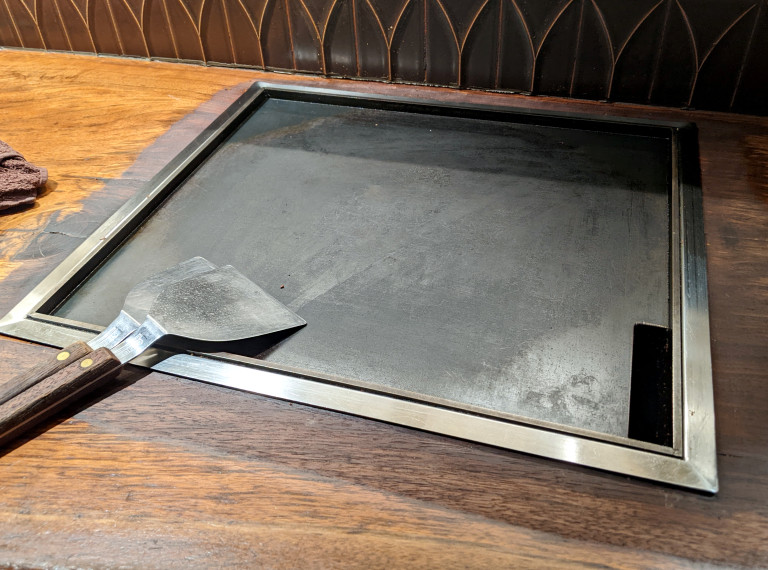
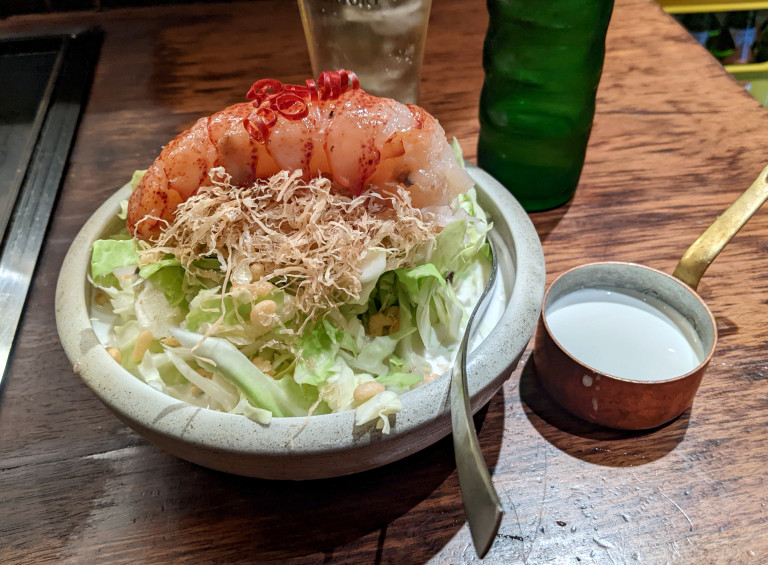
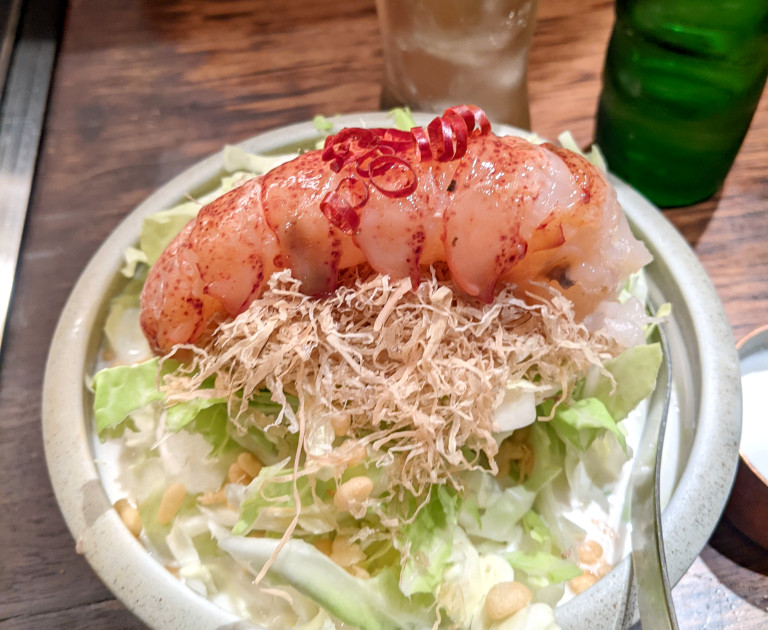
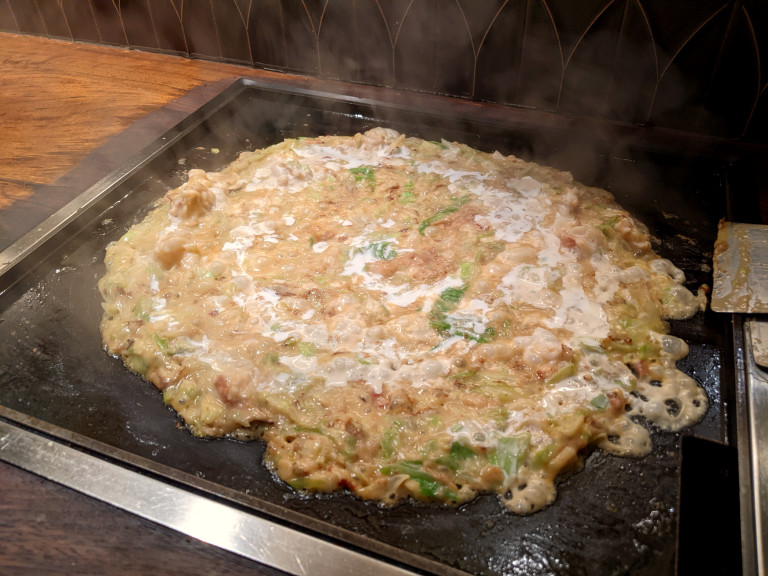
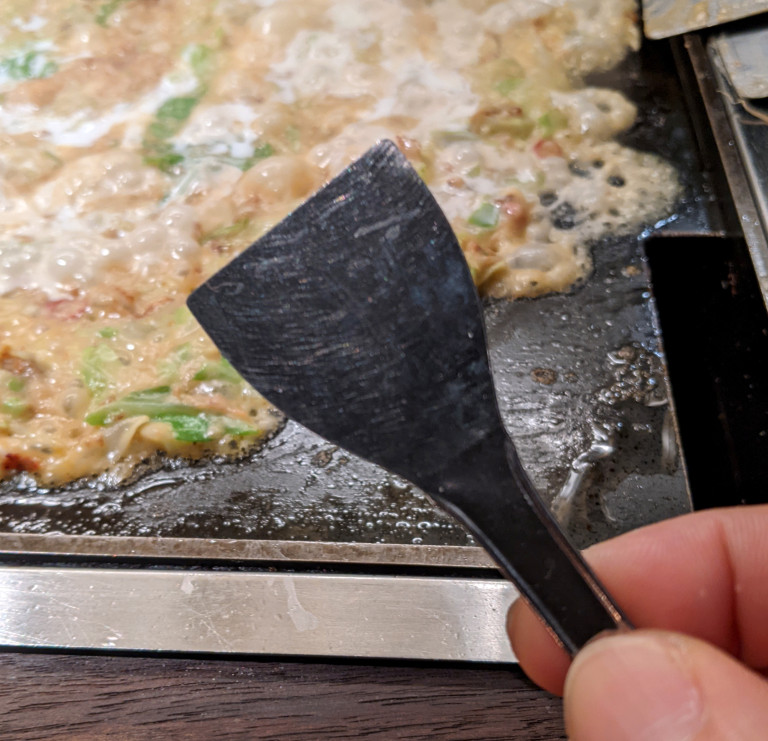
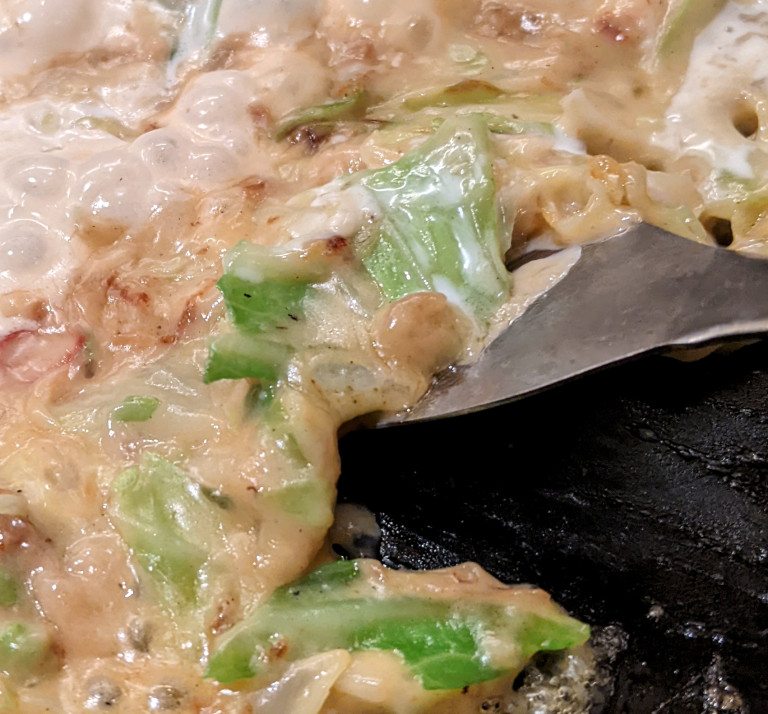
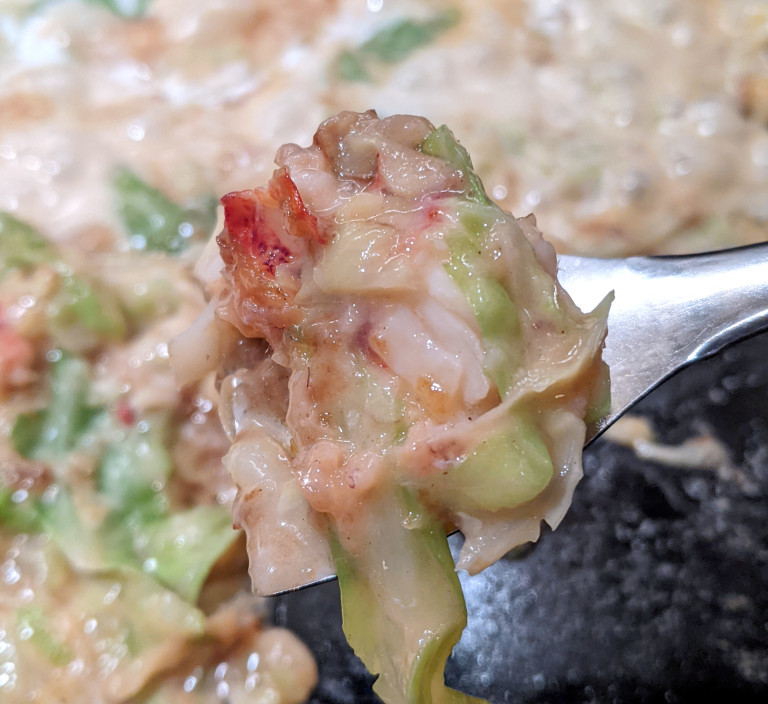
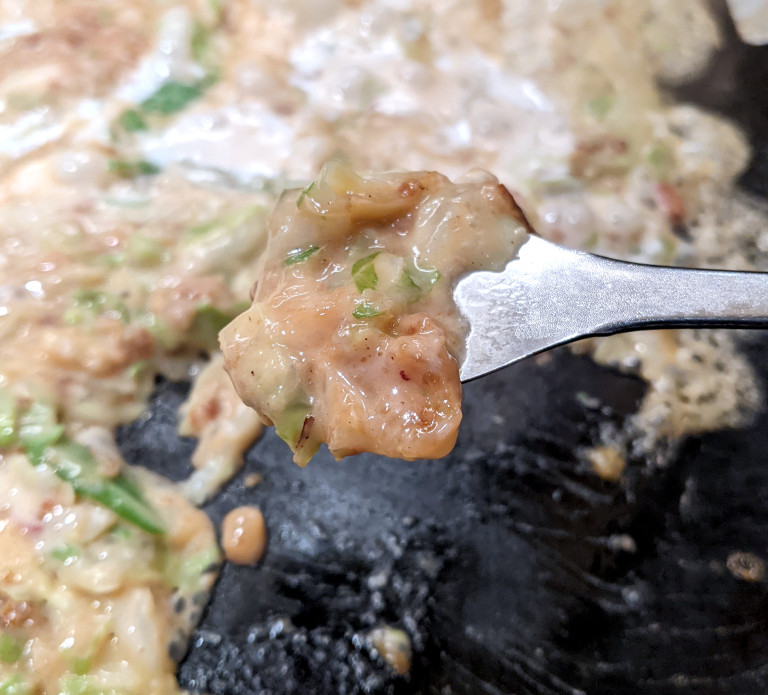
 Monjayaki vending machine appears in Tokyo
Monjayaki vending machine appears in Tokyo We cook a monjayaki Japanese pancake on the hood of a car during Japan’s hottest summer ever【Vid】
We cook a monjayaki Japanese pancake on the hood of a car during Japan’s hottest summer ever【Vid】 Crazy Tokyo restaurant offers a 7.3-pound tempura rice bowl, so of course we had to eat it!
Crazy Tokyo restaurant offers a 7.3-pound tempura rice bowl, so of course we had to eat it! Tokyo’s spicy cod roe ice cream: An unexpected dessert that tastes about like what you’d expect
Tokyo’s spicy cod roe ice cream: An unexpected dessert that tastes about like what you’d expect Is that restaurant in Tokyo with the giant mecha crab sign any good?
Is that restaurant in Tokyo with the giant mecha crab sign any good? Foreigner’s request for help in Tokyo makes us sad for the state of society
Foreigner’s request for help in Tokyo makes us sad for the state of society Japanese-style accommodation at the new Premium Dormy Inn hotel in Asakusa will blow your mind
Japanese-style accommodation at the new Premium Dormy Inn hotel in Asakusa will blow your mind Ghibli Park now selling “Grilled Frogs” from food cart in Valley of Witches
Ghibli Park now selling “Grilled Frogs” from food cart in Valley of Witches Seaside scenery, history, and so many desserts on Yokohama’s Akai Kutsu【Japan Loop Buses】
Seaside scenery, history, and so many desserts on Yokohama’s Akai Kutsu【Japan Loop Buses】 All-you-can-drink Starbucks and amazing views part of Tokyo’s new 170 meter-high sky lounge
All-you-can-drink Starbucks and amazing views part of Tokyo’s new 170 meter-high sky lounge Smash Bros. director Sakurai stabs Kirby in the face, has delicious justification for it
Smash Bros. director Sakurai stabs Kirby in the face, has delicious justification for it New virgin-seducing lingerie collection from Japan throws virtue out the window【Photos】
New virgin-seducing lingerie collection from Japan throws virtue out the window【Photos】 Gorgeous Chinese woman creates one of Japan’s favorite mobile games, encourages microtransactions
Gorgeous Chinese woman creates one of Japan’s favorite mobile games, encourages microtransactions Akihabara pop-up shop sells goods made by Japanese prison inmates
Akihabara pop-up shop sells goods made by Japanese prison inmates Top 27 ugliest album covers from Yugoslavia 【Photos】
Top 27 ugliest album covers from Yugoslavia 【Photos】 McDonald’s new Happy Meals offer up cute and practical Sanrio lifestyle goods
McDonald’s new Happy Meals offer up cute and practical Sanrio lifestyle goods Japanese ramen restaurants under pressure from new yen banknotes
Japanese ramen restaurants under pressure from new yen banknotes French Fries Bread in Tokyo’s Shibuya becomes a hit on social media
French Fries Bread in Tokyo’s Shibuya becomes a hit on social media Red light district sushi restaurant in Tokyo shows us just how wrong we were about it
Red light district sushi restaurant in Tokyo shows us just how wrong we were about it New private rooms on Tokaido Shinkansen change the way we travel from Tokyo to Kyoto
New private rooms on Tokaido Shinkansen change the way we travel from Tokyo to Kyoto Tokyo Tsukiji fish market site to be redeveloped with 50,000-seat stadium, hotel, shopping center
Tokyo Tsukiji fish market site to be redeveloped with 50,000-seat stadium, hotel, shopping center Japanese city loses residents’ personal data, which was on paper being transported on a windy day
Japanese city loses residents’ personal data, which was on paper being transported on a windy day Beautiful Ghibli sealing wax kits let you create accessories and elegant letter decorations【Pics】
Beautiful Ghibli sealing wax kits let you create accessories and elegant letter decorations【Pics】 Secret Kitchen bento serves Japanese flowers, birds, wind and moon in a box, but is it worth it?
Secret Kitchen bento serves Japanese flowers, birds, wind and moon in a box, but is it worth it? New definition of “Japanese whiskey” goes into effect to prevent fakes from fooling overseas buyers
New definition of “Japanese whiskey” goes into effect to prevent fakes from fooling overseas buyers Our Japanese reporter visits Costco in the U.S., finds super American and very Japanese things
Our Japanese reporter visits Costco in the U.S., finds super American and very Japanese things Studio Ghibli releases Kiki’s Delivery Service chocolate cake pouches in Japan
Studio Ghibli releases Kiki’s Delivery Service chocolate cake pouches in Japan More foreign tourists than ever before in history visited Japan last month
More foreign tourists than ever before in history visited Japan last month New Pokémon cakes let you eat your way through Pikachu and all the Eevee evolutions
New Pokémon cakes let you eat your way through Pikachu and all the Eevee evolutions Disney princesses get official manga makeovers for Manga Princess Cafe opening in Tokyo
Disney princesses get official manga makeovers for Manga Princess Cafe opening in Tokyo Sales of Japan’s most convenient train ticket/shopping payment cards suspended indefinitely
Sales of Japan’s most convenient train ticket/shopping payment cards suspended indefinitely Sold-out Studio Ghibli desktop humidifiers are back so Totoro can help you through the dry season
Sold-out Studio Ghibli desktop humidifiers are back so Totoro can help you through the dry season Japanese government to make first change to romanization spelling rules since the 1950s
Japanese government to make first change to romanization spelling rules since the 1950s Ghibli founders Toshio Suzuki and Hayao Miyazaki contribute to Japanese whisky Totoro label design
Ghibli founders Toshio Suzuki and Hayao Miyazaki contribute to Japanese whisky Totoro label design Doraemon found buried at sea as scene from 1993 anime becomes real life【Photos】
Doraemon found buried at sea as scene from 1993 anime becomes real life【Photos】 Tokyo’s most famous Starbucks is closed
Tokyo’s most famous Starbucks is closed One Piece characters’ nationalities revealed, but fans have mixed opinions
One Piece characters’ nationalities revealed, but fans have mixed opinions We asked a Uniqlo employee what four things we should buy and their suggestions didn’t disappoint
We asked a Uniqlo employee what four things we should buy and their suggestions didn’t disappoint Can a plant-based restaurant serving Buddhist meals turn meat-loving Mr. Sato into a vegetarian?
Can a plant-based restaurant serving Buddhist meals turn meat-loving Mr. Sato into a vegetarian? We visit the new Japan branch of Wayback Burgers, try their vegan set, notice a big problem
We visit the new Japan branch of Wayback Burgers, try their vegan set, notice a big problem We eat tasty egg sandwiches from Japan’s first branch of Eggslut, the U.S.-based breakfast shop
We eat tasty egg sandwiches from Japan’s first branch of Eggslut, the U.S.-based breakfast shop Japanese chain Bikkuri Donkey’s enormous salad almost beats Mr. Sato, but not because of its size
Japanese chain Bikkuri Donkey’s enormous salad almost beats Mr. Sato, but not because of its size Everything you need to know about takoyaki (octopus balls) 【Video】
Everything you need to know about takoyaki (octopus balls) 【Video】 Mr. Sato gorges on Michelin-quality dim sum for his birthday, eats like a king for cheap
Mr. Sato gorges on Michelin-quality dim sum for his birthday, eats like a king for cheap Be Mr. Sato’s online friend, and he might take you to dinner, like he did with these foreign fans
Be Mr. Sato’s online friend, and he might take you to dinner, like he did with these foreign fans Mr. Sato eats a Japanese sweet potato brulée so good that it just about knocks his socks off
Mr. Sato eats a Japanese sweet potato brulée so good that it just about knocks his socks off Could you eat 50 beef cutlet refill pieces? If so, this Japanese restaurant will let you eat for free
Could you eat 50 beef cutlet refill pieces? If so, this Japanese restaurant will let you eat for free Mr. Sato goes to a Korean-style shaved ice cafe, makes several mistakes, still has a great time
Mr. Sato goes to a Korean-style shaved ice cafe, makes several mistakes, still has a great time We eat an Italian-inspired lobster curry…at a cheap curry chain!
We eat an Italian-inspired lobster curry…at a cheap curry chain! Mr. Sato attempts to conquer mountains of shaved ice at all-you-can-eat event
Mr. Sato attempts to conquer mountains of shaved ice at all-you-can-eat event Tokyo police stopped us for random questioning, so we asked them to recommend a good restaurant
Tokyo police stopped us for random questioning, so we asked them to recommend a good restaurant Tokyo restaurant offers “DIY Tempura Bowls,” so of course we had to go check it out
Tokyo restaurant offers “DIY Tempura Bowls,” so of course we had to go check it out We eat a luxurious Japanese-style buffet breakfast in a restaurant full of wood-carved bears
We eat a luxurious Japanese-style buffet breakfast in a restaurant full of wood-carved bears We visit Japanese fast food chain Dom Dom’s upscale branch for a taste of luxury
We visit Japanese fast food chain Dom Dom’s upscale branch for a taste of luxury
Leave a Reply